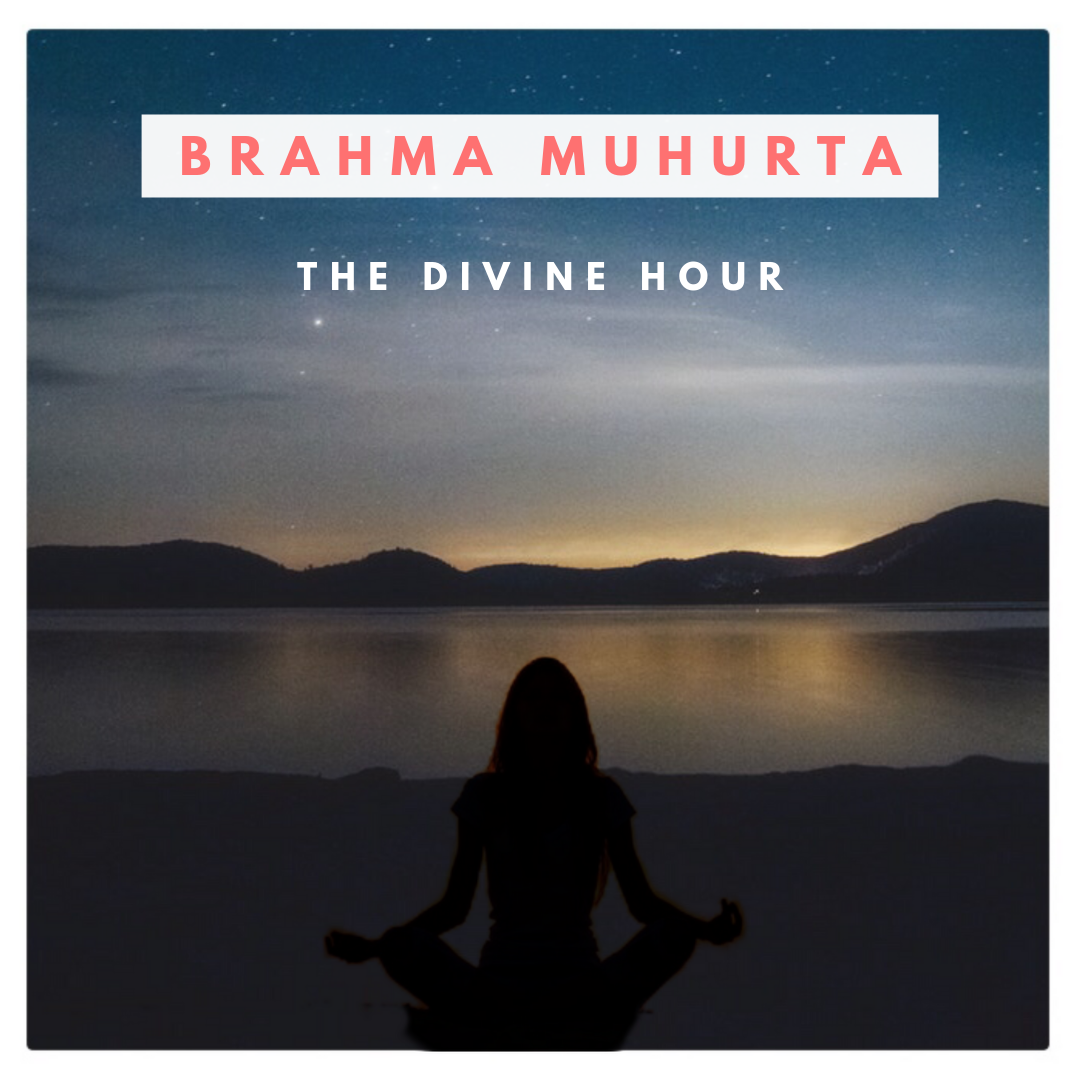Brahma Muhurta
Synchronising our body-clock with the rising and setting sun is the greatest way to reverse the ageing process. The whole of nature works according to the sun.
Brahma Muhurta translates to the “time of divinity”, a period which is considered to be the ideal time to practice asanas, pranayama, meditation and mantra chanting.
During this time, Prana – the vital energy is at a high level of vibration. Performing asanas, pranayama and meditation at this time ensures we imbibe as much of this available dose of prana. In a way, brahma muhurta amplifies and supercharges our practices.
At what time does Brahma Muhurta begin?
Most yogic traditions consider Brahma Muhurta to start two hours before sunrise. Ayurveda states that Brahma Muhurta is the time Vata dosha –one of the three bodily humours – is dominant. Since Vata dosha is associated with movement, Brahma Muhurta is thought as the best time to arise.
The benefits of waking up during Brahma Muhurta
At the time of Brahma Muhurta, the activities of most beings are yet to commence. Peace is at its highest, which has a direct effect on the body and mind. The environment remains peaceful because everything is quiet, the day has not yet begun. Our inner being too is peaceful, because during this time the pineal gland secretes at its highest capacity.
Synchronising our body-clock with the rising and setting sun is the greatest way to reverse the ageing process. The whole of nature works according to the sun.
Waking up during Brahma Muhurta has multiple health benefits. The Ashtanga Hridayam, one of Ayurveda’s most ancient and revered texts says:
“Brahmi Muhurtam Uttishthet Swastho Rakshartham Ayusha: tatra sarvartha shantyartham smareccha madhusudanam.”
Translation
“One should wake up during Brahma Muhurta for perfect health; and for achieving a life as long as one desires.”
Brahma Muhurta and Vata dosha
In the human body and mind, the pancha tattwa or five elements exist through the three doshas: Vata (air), Pitta (fire) and Kapha (water). When the doshas are in balance, the body and mind live in harmony and good health. In the body, vata is related to gas, pitta to bile and kapha to mucus.
A precise and balanced formation of gas, bile and mucus results in good health. When either of them is out of balance, we fall out of wellness.
Each dosha becomes predominant during certain periods of the day. In fact, the entire 24 hours of the day and night can be divided between periods of vata, pitta and kapha, in which the qualities of the predominant dosha prevail.
The first period of Vata lasts four hours and ends at sunrise, peaking midway. The peak of vata period marks the start of Brahma muhurta, when vata is at its maximum effect.
Things we must never do during Brahma Muhurta
According to the Dharmashastra – a collection of ancient texts on dharma –there a few things one should never do during Brahma Muhurta:
1. Eating during this time will be detrimental to health. This is a time for elimination, not for assimilation.
2. This is a good period to exercise the body, to do asanas, pranayama, to meditate and to chant. Vata time is not a time to strenuously exercise the mind.
Is waking up during Brahma Muhurta suitable for everyone?
Waking up at this time is not recommended for pregnant women, children, people suffering from any ailments or when the previous meal has not been properly digested. Aged people who have trouble waking up during Brahma Muhurta may choose not to, as the body may have already formed a different cycle after many years which may be difficult to break.
How to calculate Brahma Muhurta in your city
Use this sunrise and sunset calculator to calculate the exact time of sunrise in your city. Then just subtract two hours from the time of sunrise. Remember, the time of sunrise changes every day.
What the masters say about Brahma Muhurta:
Swami Sivananda Saraswati:
“O Aspirants! Get up at Brahmamuhurta and practise meditation. Do not fail at any cost. Brahmamuhurta is the morning period from 3.30 a.m. to 5.30 a.m. It is very favourable for meditation. The mind is quite refreshed after good sleep. It is quite calm and serene. There is the preponderance of Sattva or purity in the mind at this time. In the atmosphere also, Sattva predominates at this period.
Every Sandhya time, or dusk, is also favourable for meditation. During Brahmamuhurta and dusk, Sushumna Nadi flows readily. You will enter into deep meditation and Samadhi without much effort when Sushumna-Nadi flows. That is the reason why Rishis, Yogis and scriptures speak very highly of these two periods of time. When the breath flows through both nostrils, know that the Sushumna is working. Whenever the Sushumna functions, sit for meditation and enjoy the inner peace of Atman or Soul.”
Swami Prabhupada
“One who cannot rise early in the morning is not spiritually serious. That is the test. Brahma-muhurta is a very auspicious moment.”
Osho
“There is a twilight, a moment when there is no light and no darkness. This they call brahmamuhurta, the moment of the divine. Become attuned, look, wait, watch. Soon your eyes will become accustomed and you will be able to see.”
Satya Sai Baba
“Brahma-muhurta means early morning. It means that the senses are quiet, not yet agitated by the day and the mind is quiet from sleep. Train yourself to waken when Brahma-muhurta begins. You may require an alarm clock at first for the job; but soon, the urge for dhyana (meditation) will rouse you.”
Sadhguru:
“Brahma Muhurta means the time of the creator. You can look at it this way: it is the time when you can create yourself. You become the Brahman in the morning, so you can make yourself the way you want yourself to be.”
“The entire body is in a certain conducive atmosphere, and there is a natural production of what is called melatonin, which is a secretion of the pineal gland. We want to make use of this because the pineal gland is secreting at its maximum during Brahma Muhurta, which means you can stabilise.”
Sri Sri Ravishankhar
“Just before sunrise, it’s called the most creative time. Brahma muhurta!“


